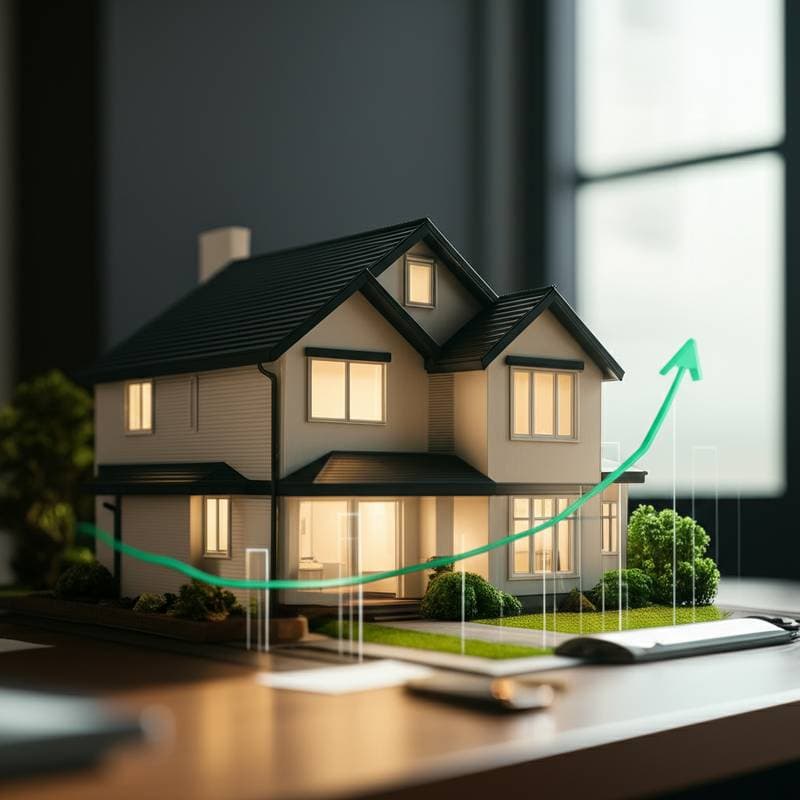Builders Increase Use of Mortgage Rate Buydowns for 2025 Affordability
Picture entering a newly constructed home with gleaming countertops and abundant natural light. The appeal is immediate, yet the prospect of monthly mortgage payments introduces financial considerations. Builders address this tension through mortgage rate buydowns, a targeted incentive that reduces early payment burdens for buyers.
This approach gains prominence as builders seek to maintain sales velocity amid higher interest rates. For prospective buyers of new homes, understanding rate buydowns reveals opportunities to achieve affordability without compromising on desired properties.
Affordability Challenges for Buyers and Builders
Elevated mortgage rates elevate monthly payments, straining buyer budgets alongside rising living expenses. Even modest rate increases can disrupt financial plans, causing potential buyers to withdraw from purchases. Builders experience prolonged inventory periods and escalating carrying costs as a result.
To counteract these pressures, builders implement temporary mortgage rate buydowns. These arrangements reduce the interest rate for a defined period, typically one to three years, with the builder subsidizing the difference. Buyers gain initial financial flexibility, while builders accelerate closings and sustain project timelines.
Understanding Mortgage Rate Buydowns
A mortgage rate buydown involves the builder providing a lump-sum payment to the lender at closing. This funds reduced interest payments for the buyer during the initial years. Common structures include 2-1 and 3-2-1 buydowns.
- 2-1 Buydown: The rate decreases by 2 percentage points in year one and 1 percentage point in year two, then reverts to the original rate in year three.
- 3-2-1 Buydown: The rate reduces by 3 points in year one, 2 in year two, and 1 in year three, before returning to the permanent rate.
Buyers benefit from lower starting payments, allowing time to stabilize finances as income potentially increases.
Reasons Builders Adopt Rate Buydowns in 2025
Builders traditionally offer incentives such as upgrades or closing cost aid, yet rate buydowns address core affordability concerns more directly. In a market where buyers prioritize payment predictability, this tool outperforms aesthetic enhancements.
Key drivers include:
- Enhanced Affordability: Initial rate reductions make higher-priced homes accessible, providing buyers with payment stability from the outset.
- Sustained Sales Flow: Consistent closings help builders manage construction financing and operational schedules during market slowdowns.
- Buyer Confidence Boost: Reduced early payments ease the transition to homeownership, particularly for first-time buyers extending their budgets.
- Competitive Edge: Amid uniform upgrade offers, payment relief differentiates listings and attracts broader buyer interest, often through branded programs.
Key Considerations for Buyers
Buyers evaluating builder-offered buydowns must scrutinize details to maximize value. Confirm that the builder fully funds the buydown without increasing the loan amount or other costs.
Essential review points:
- Funding Source: Verify the builder covers the expense from their incentive allocation.
- Post-Buydown Rate: Secure confirmation of the rate applied after the temporary period ends.
- Refinancing Flexibility: Inquire about penalty-free refinancing options if rates decline.
- Program Specifics: Obtain written terms on duration, step-up schedule, and lender requirements.
- Loan and Appraisal Effects: Ensure the buydown supports approval and does not undervalue the property appraisal.
Builder Implementation Strategies
Builders treat buydowns as strategic marketing investments, often redirecting funds from other incentives. For instance, a $10,000 design credit might convert to buydown financing, yielding sustained monthly savings over one-time benefits.
This shift broadens appeal to price-sensitive buyers. Many builders collaborate with preferred lenders experienced in buydown processing, ensuring efficient closings aligned with construction schedules.
Buydowns Versus Alternative Incentives
Rate buydowns provide distinct advantages, though they suit specific needs. The following table compares options:
| Incentive Type | Primary Benefit | Key Limitation |
|---|---|---|
| Mortgage Buydown | Reduced initial monthly payments | Temporary relief; rate increases later |
| Closing Cost Credit | Lower upfront costs | No ongoing payment reduction |
| Design Upgrade Credit | Customized home features | Minimal impact on budget |
| Price Reduction | Permanent cost savings | Potential strain on builder margins |
Buyers focused on early cash flow often find buydowns superior to non-financial perks.
Cost Analysis and Buyer Savings
Buydowns typically require builder contributions of 2 to 4 percent of the loan amount. For a $400,000 mortgage, this equates to $8,000 to $16,000, viewed as an effective sales tool.
Buyers realize immediate gains: a 2-1 buydown could lower first-year payments by $300 to $500 monthly. These funds support essentials like furnishings, maintenance reserves, or efficiency improvements such as insulation or lighting upgrades.
Market Timing and Regional Factors
Builders extend generous buydown offers during periods of elevated inventory or subdued demand, signaling negotiation opportunities. Consult local lenders or agents to identify top programs in specific areas.
Preferred lender partnerships in certain communities expedite processing, while open choices allow buyer flexibility. In expanding markets, buydowns preserve pricing integrity and facilitate buyer entry without devaluing resale properties.
Actionable Steps for Buyers
- Obtain prequalification from a lender to clarify budget and buydown impacts.
- Project payments post-buydown to prepare for rate adjustments.
- Explore combined incentives for compounded value.
- Evaluate builder reputation and quality alongside financial offers.
- Examine contract documents thoroughly with professional guidance.
Strategic Use of Buydown Savings
Homeownership involves emotional and financial dimensions, with buydowns alleviating initial pressures to foster quicker adaptation. Manage savings by establishing repair funds, preparing for rate transitions, implementing cost-saving upgrades, or positioning for refinancing.
Integrate buydowns into comprehensive planning, viewing them as a pathway to stable long-term ownership. This approach transforms temporary relief into enduring financial security.
